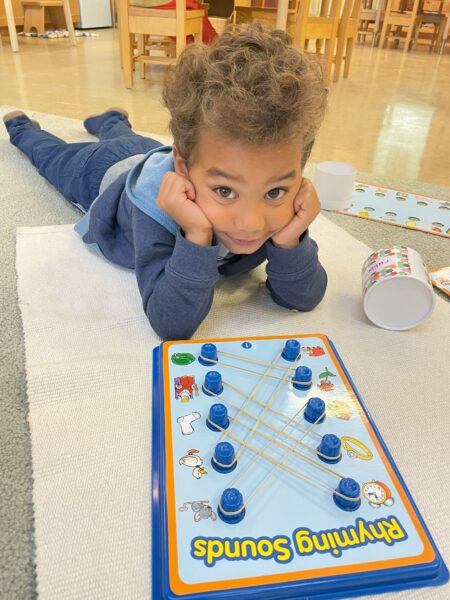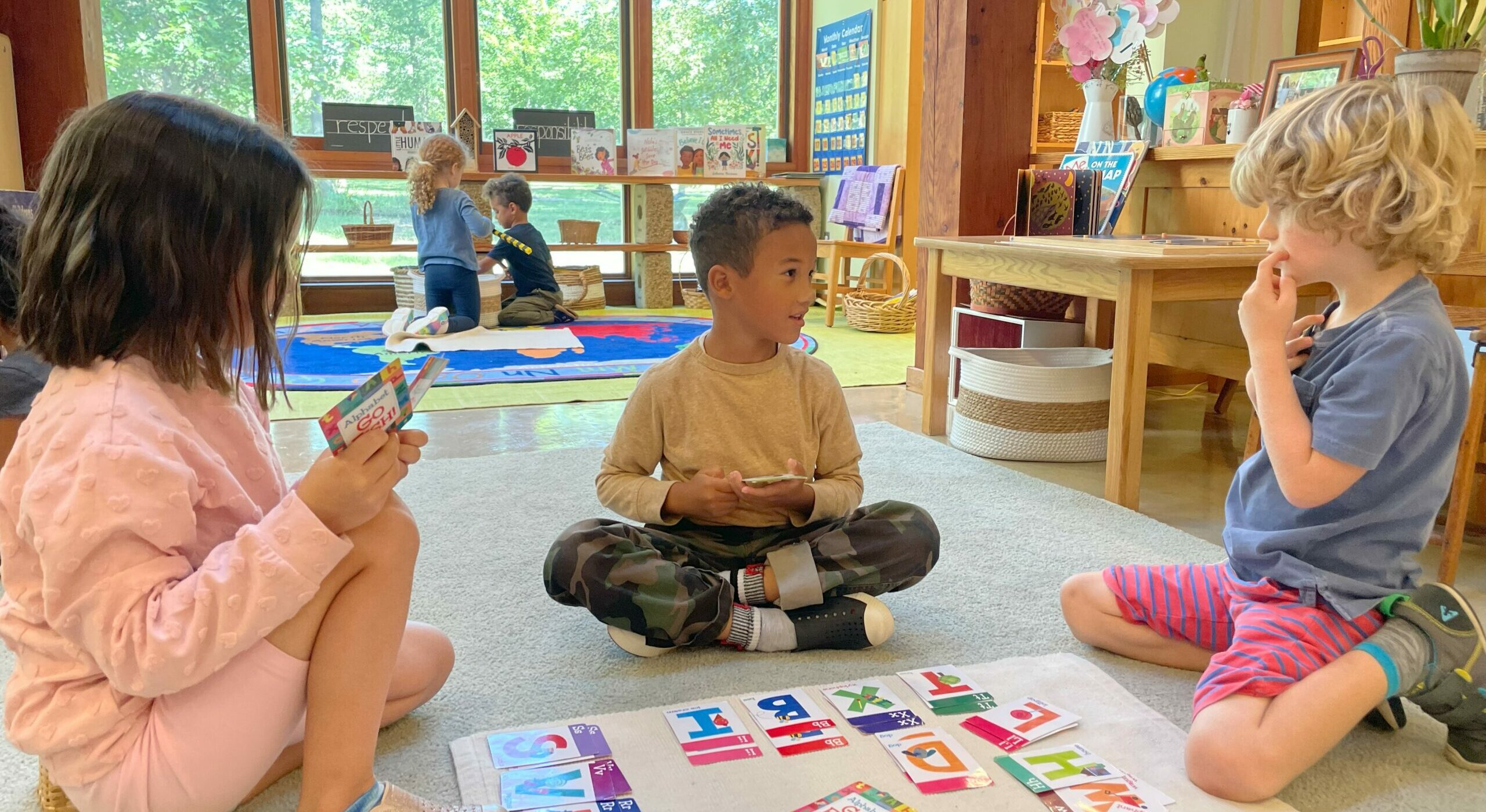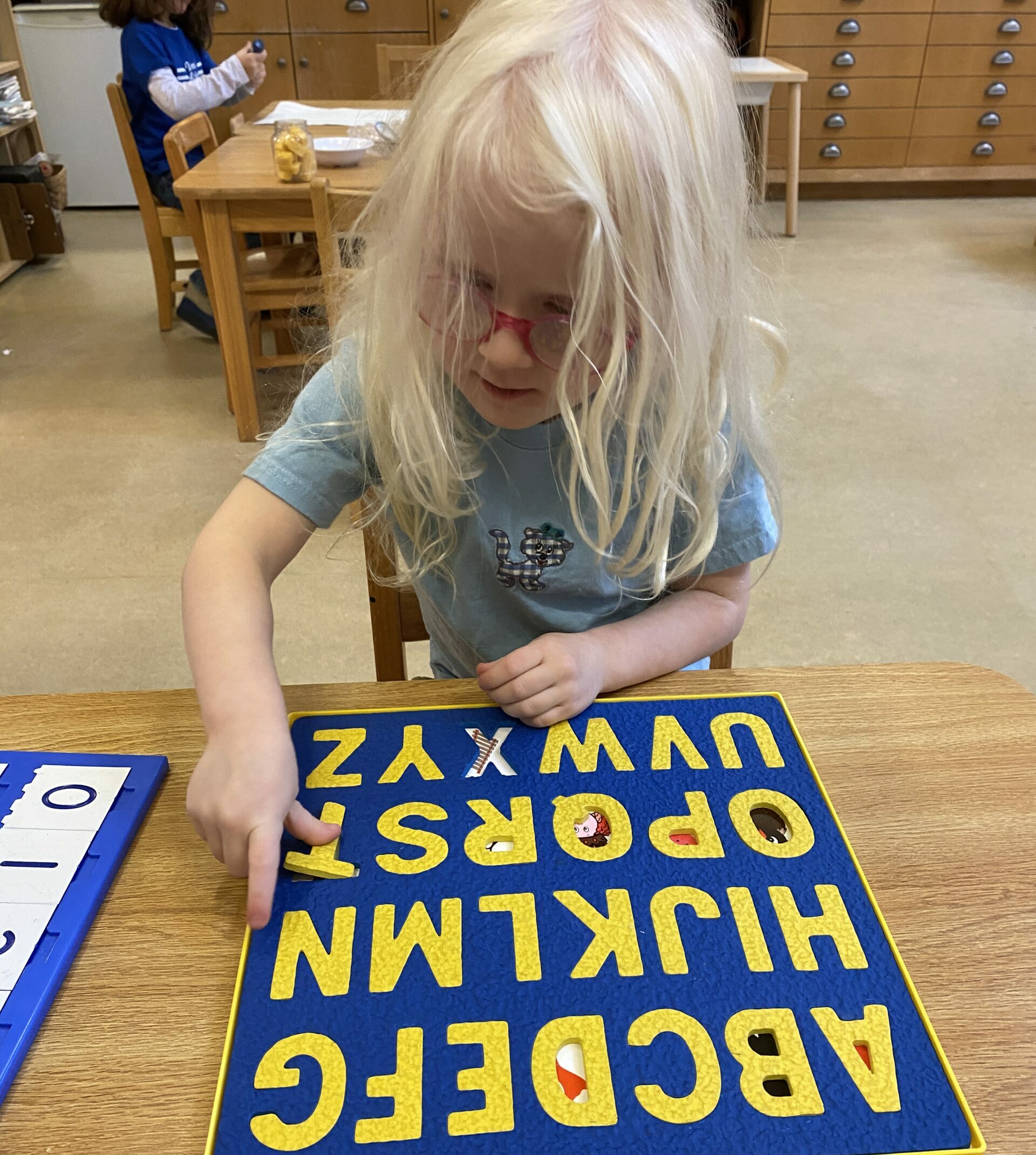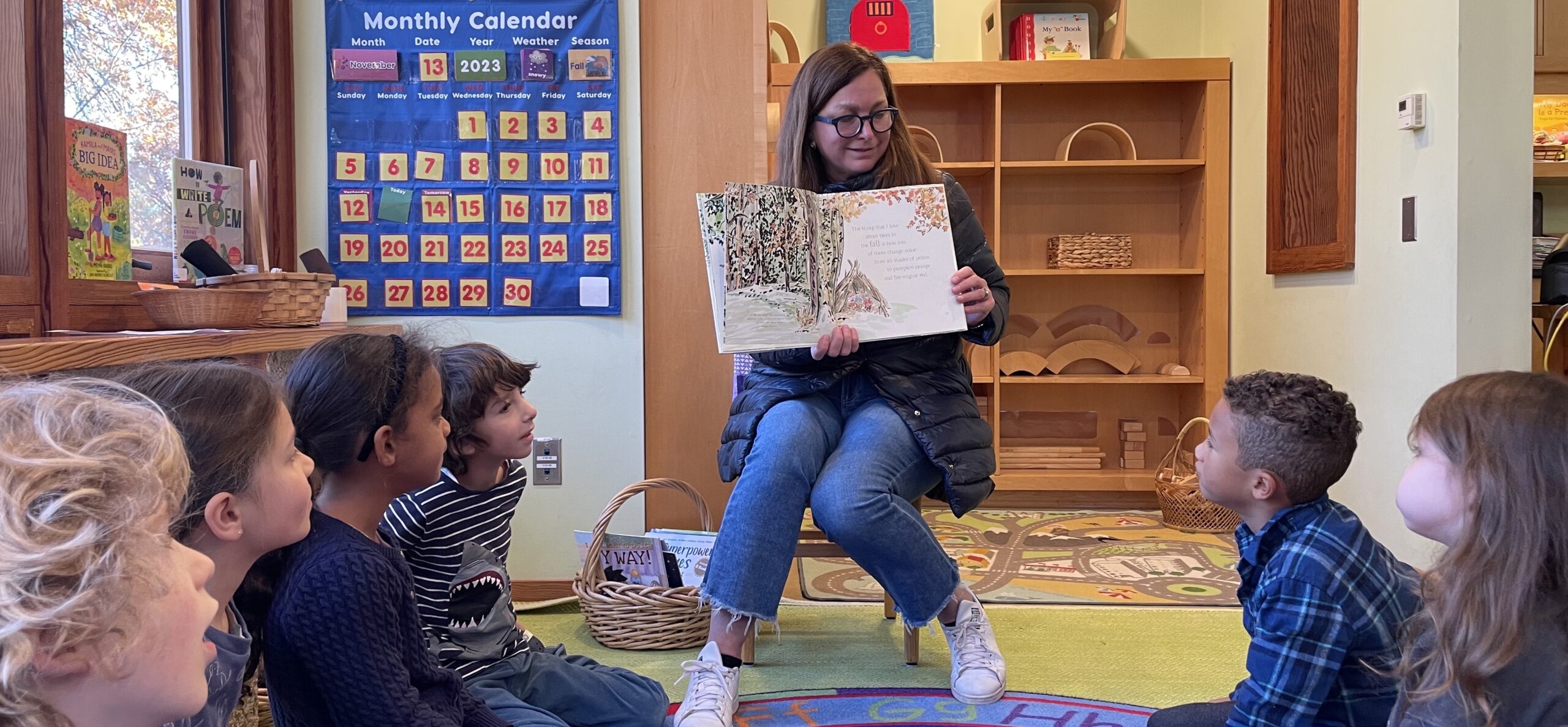Learning how to read and write is a complex process. While learning to speak is a natural process that requires little instruction, our human brains are not hardwired to learn how to read and write and it therefore requires direct, purposeful instruction. To guide students through this journey, Willow teachers use many tools, including multisensory experiences that make direct instruction of phonics fun and engaging for our littlest learners. Students learn through activities that involve seeing, hearing, and moving, especially in preschool and kindergarten.
“Direct, explicit, and systematic phonemic awareness and phonics instruction is critical to building the foundational skills children need to become confident, independent readers and spellers,” says Willow’s Reading Specialist, Nora Devine, who specializes in Grades Preschool-4 literacy development. “At Willow, incorporating multisensory activities that foster the development of these skills goes hand-in-hand with our belief that learning should be both purposeful and playful!”
Sound & Phonological Awareness

Kindergarten students use different tactile tools to practice rhyming.
Did you know that our ears play a critical part in learning how to read? Phonological awareness, defined as the ability to recognize and work with the sounds in spoken words, is an important first step to literacy. Your child’s ability to understand how letters connect to sounds begins by building awareness of what they are hearing, then connecting those sounds to the written symbols that represent them. Starting in preschool at Willow, students begin to train their ears to hear letter and word sounds through songs, rhymes, and games.
Learning starts with basics, like alphabet knowledge and basic letter sounds, and teacher-led speaking and listening games. These games include activities where students identify whether two words rhyme or not or classify small objects by their first sound. Teacher read-alouds include books that feature alliteration and rhymes to help students develop understanding of sound and patterns.
“Fostering young children’s oral language skills is critical to their development ultimately as readers in terms of both word-reading and comprehension,” says Willow’s Reading Specialist Nora Devine, who works closely with students on their literacy development.
Visual, Tactile Phonics Tools
While Willow kindergarteners continue to use songs, rhymes, and oral language games to hone their phonological awareness, they also enjoy hands-on activities using many different multisensory tools to develop their phonemic awareness and alphabet knowledge, putting sounds to letters and words.
Some examples of these hands-on tools include:
- Tactile letter cards: Students trace sandpaper letters on these cards with their fingers while simultaneously naming or saying the sound of the letter. This reinforces the connection between sound and letter.
- Sandbox spelling: Sensory learning stations are an important part of our early elementary classrooms, and the popular sandbox station also offers a great, tactile phonics opportunity. Students trace letters in sand while saying their sound.
- Magnetic letter tiles: Magnetic tile letters aid in students’ ability to spell out words. Teachers orally provide a word or show a student an image. The student then builds the word sound by sound, letter by letter, using the tiles. Teachers then present a word with only one sound difference, and the student is able to remove a letter and add the correct one in its place.

Kindergarteners practice their skills together using letter cards.
Direct individualized instruction

Preschoolers practice their alphabet skills using traceable felt letters.
At Willow, incorporating multisensory tools with phonics instruction allows teachers to engage students through visual, auditory, and hands-on learning, making phonics learning more fun and individualized. Teachers lead the class as a group to introduce phonics concepts directly and systematically, then to reinforce these skills and meet children where they are, students work in different phonics activity stations individually or as in pairs. During this time, Willow teachers work closely with students to make sure they are mastering literacy skills, progressing at their own pace, and feeling encouraged.
In our classrooms, you will see teachers working one-on-one with students to guide them through phonics instruction. For example, Willow teachers use Elkonin boxes to help students develop phonemic awareness by learning how to segment and blend the sounds in words. The teacher speaks a word, which the student segments into its sounds while moving a sound “marker” into a sound “box” for each individual sound.
Phonics instruction is very important at this stage of a student’s learning. Our teaching of phonics at Willow ties in our values of experiential, hands-on learning.
Find out more about Willow’s preschool and kindergarten program, as well as our approach to literacy development! Start a conversation with our Director of Enrollment Management, Lisa VanderVeen. Applications for the 2024-25 school year are due on February 1, 2024.

